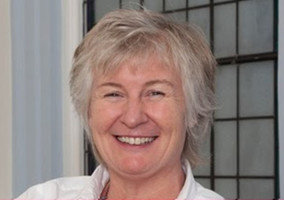Annika Small reflects on the importance of making it easier for people to connect.
Is it better to give or receive? My six-year-old nephew is clearly in the distinct minority, as studies show that most adults overwhelmingly prefer to give. Cue the queues in the high street or, more frequently now, the roads clogged with DPD delivery vans as the festive season approaches.
Psychologists tell us that making a conscious effort to improve the lives of others triggers an emotional event that leaves us feeling safe, secure and happy. Not exactly my state of mind last Saturday afternoon in Toys R Us but undoubtedly giving is a positive psychological experience.
Recent studies show that there is a growing trend towards giving experiences rather than material things. People are also increasingly giving their time rather than money, for example helping family or friends with a home improvement project. According to CAF’s annual UK Giving survey, this also extends to charitable giving, with younger people less likely to donate money and more likely to volunteer. Interestingly, 89 per cent of people have participated in at least one charitable or social action in the last year compared with 79 per cent the previous year.
This has led me to reflect on what more we can do in the charitable sector to give to each other. Few charities would say that they aren’t stretched in terms of resources so how can we be more creative in sharing these? How can we give in ways that cost us nothing but might make a big impact on a fellow charity, such as making introductions and giving credit to others in articles and speeches? As Dawn Austwick of Big Lottery Fund elegantly puts it, how can we show more ‘generous leadership’?
'We urgently need to create a more responsive, collaborative social sector'
If we are to meet the needs of the most disadvantaged in our society, we urgently need to create a more responsive, collaborative social sector. This involves building meaningful connections between charities and social enterprises as well as between funders and community networks in order to link skills, resources and ideas. As well as requiring us to become better at giving, we also need to improve how we define and communicate what we need and what we have to give. There are some valuable lessons in my nephew’s Christmas list in terms of being specific and clear.
What I would like for Christmas? More conversations like the one I had with Sally Higham of Runaclub earlier this week: a 20-minute phonecall in which we both articulated our current priorities, three things that our organisations most need and three things that we can offer. That conversation has led to two key introductions on both sides and a move towards sharing some resource. For anyone looking to manage groups of volunteers, Runaclub is worth checking out.
I know these sorts of conversations are going on across the sector. But, given the mechanisms available for giving are rapidly changing with the increased use of online platforms and social media, I wonder how we might scale these, making it easier for us all to give to each other and thereby increase our impact as a sector? The monthly Community Announcements from the Tech for Good Meetup is one example of a simple yet effective use of free and collaborative digital tech to disseminate news, requests and offers of support across the 6,000-strong community. And the excellent knowledge and help-sharing that happens through groups such as the Digital Charities Slack channel(s) and the ECF newsletter are other examples. What more might we do using tech to facilitate greater collaboration?
It looks like that may the first of my New Year’s resolutions sorted. Give more and figure out mechanisms for us all to give more effectively across the sector. Now on to consider whether my second resolution. Diet, exercise, teetotalism? Or perhaps best to just focus on my first resolution.
Annika Small is a co-founder and director at CAST (Centre for Accelerating of Social Technology) and director of Lightful
Related articles












